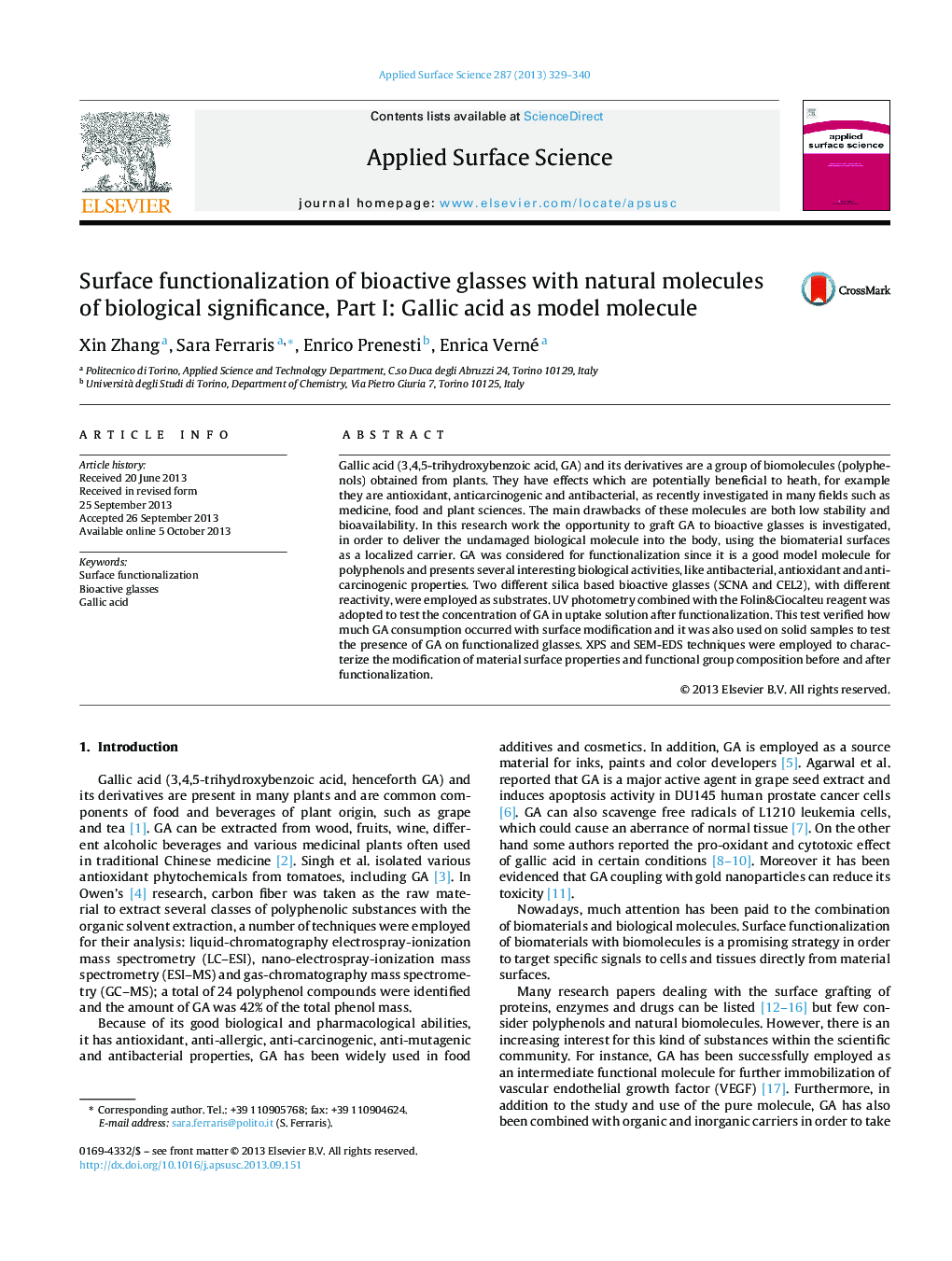| Article ID | Journal | Published Year | Pages | File Type |
|---|---|---|---|---|
| 5359398 | Applied Surface Science | 2013 | 12 Pages |
Abstract
Gallic acid (3,4,5-trihydroxybenzoic acid, GA) and its derivatives are a group of biomolecules (polyphenols) obtained from plants. They have effects which are potentially beneficial to heath, for example they are antioxidant, anticarcinogenic and antibacterial, as recently investigated in many fields such as medicine, food and plant sciences. The main drawbacks of these molecules are both low stability and bioavailability. In this research work the opportunity to graft GA to bioactive glasses is investigated, in order to deliver the undamaged biological molecule into the body, using the biomaterial surfaces as a localized carrier. GA was considered for functionalization since it is a good model molecule for polyphenols and presents several interesting biological activities, like antibacterial, antioxidant and anticarcinogenic properties. Two different silica based bioactive glasses (SCNA and CEL2), with different reactivity, were employed as substrates. UV photometry combined with the Folin&Ciocalteu reagent was adopted to test the concentration of GA in uptake solution after functionalization. This test verified how much GA consumption occurred with surface modification and it was also used on solid samples to test the presence of GA on functionalized glasses. XPS and SEM-EDS techniques were employed to characterize the modification of material surface properties and functional group composition before and after functionalization.
Related Topics
Physical Sciences and Engineering
Chemistry
Physical and Theoretical Chemistry
Authors
Xin Zhang, Sara Ferraris, Enrico Prenesti, Enrica Verné,
